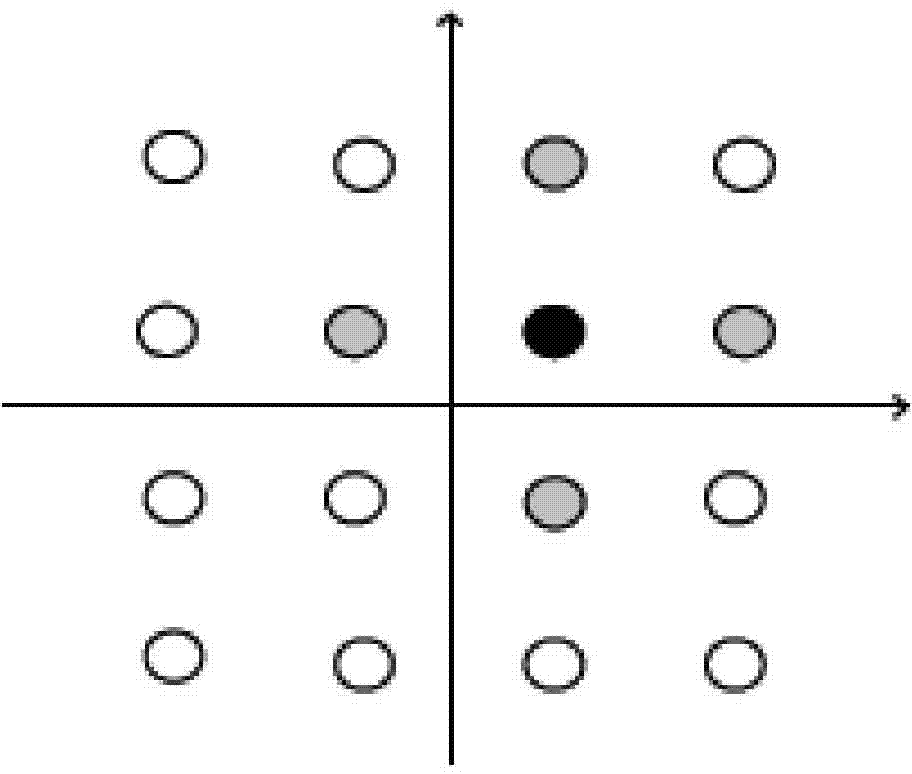Multi-cell MIMO system uplink signal detection method based on constellation structure
A signal detection and multi-cell technology, applied in the baseband system, multi-carrier system, baseband system components, etc., can solve the problem of large amount of soft information, reduce the amount of calculation, reduce the amount of information interaction, and reduce the complexity of communication Effect
- Summary
- Abstract
- Description
- Claims
- Application Information
AI Technical Summary
Problems solved by technology
Method used
Image
Examples
Embodiment
[0054] Such as figure 2 As shown, four base stations are selected for cooperative detection. Base stations BS1, BS2, BS3, and BS4 are mutually adjacent base stations. The four base stations perform soft information interaction. During the interaction process, each base station sends the posterior probability data to All neighboring base stations participating in cooperative detection. Such as image 3 As shown, the black point is the largest posterior probability data in the constellation diagram, which is selected as the reference point, and the gray point is the four posterior probability data of the upper, lower, left, and right sides of the reference point. The reference point and its upper, lower, left, and right sides are selected. Four posterior probability data, and send the posterior probability data of the selected symbol to the corresponding adjacent base stations participating in the cooperative detection.
[0055] Figure 4 In the case of cooperative detection...
PUM
 Login to View More
Login to View More Abstract
Description
Claims
Application Information
 Login to View More
Login to View More - R&D
- Intellectual Property
- Life Sciences
- Materials
- Tech Scout
- Unparalleled Data Quality
- Higher Quality Content
- 60% Fewer Hallucinations
Browse by: Latest US Patents, China's latest patents, Technical Efficacy Thesaurus, Application Domain, Technology Topic, Popular Technical Reports.
© 2025 PatSnap. All rights reserved.Legal|Privacy policy|Modern Slavery Act Transparency Statement|Sitemap|About US| Contact US: help@patsnap.com



